RS Aggarwal Class 7 Math Fifteenth Chapter Properties of Triangles Exercise 15C Solution
EXERCISE 15C
(1) Is it possible to draw a triangle, the lengths of whose sides are given below?
(i) 1 cm, 1 cm, 1 cm
Solution: Clearly, we have:
1 + 1 > 1
1 + 1 > 1
1 + 1 > 1
Thus, the sum of any two of these numbers is greater than the third.
Hence, it is possible to draw a triangle whose sides are 1 cm, 1 cm and 1 cm.
(ii) 2 cm, 3 cm, 4 cm
Solution: Consider the numbers 2, 3, 4.
It is clear that the sum of any two numbers is greater than the third.
Hence, it is possible to draw a triangle whose sides are 2 cm, 3 cm and 4 cm.
(iii) 7 cm, 8 cm, 15 cm
Solution: Consider the numbers 7, 8, 15.
Clearly, 7 + 8 = 15
Thus, the sum of two of these numbers is not greater than the third.
Hence, it is not possible to draw a triangle whose sides are 7 cm, 8 cm and 15 cm.
(iv) 3.4 cm, 2.1 cm, 5.3 cm
Solution: Consider the numbers 3.4, 2.1, 5.3
Clearly, 3.4 + 2.1 = 5.5
Thus, the sum of two of these numbers is not greater than the third.
Hence, it is not possible to draw a triangle whose sides are 3.4 cm, 2.1 cm and 5.3 cm.
(v) 6 cm, 7 cm, 14 cm
Solution: Consider the numbers 6, 7, 14.
Clearly, 6 + 7 = 13
Thus, the sum of two of these numbers is not greater than the third.
Hence, it is not possible to draw a triangle whose sides are 6 cm, 7 cm and 14 cm.
(2) Two sides of a triangle are 5 cm and 9 cm long. What can be the length of its third side?
Solution: Let the length of the third side be x cm.
We know that the sum of any two sides of a triangle is greater than the third.
∴ (5 + 9) > x
or, x < 14
Also, we know that the difference of any two sides of a triangle is greater than the third side.
∴ (9 – 5) < x
or, x > 4.
Thus, 4 < x < 14.
Hence, the length of the third side must be larger than 4 cm and smaller than 14 cm.
(3) If P is a point in the interior of ∆ABC then fill in the blanks with > or < or =.
(i) PA + PB > AB
(ii) PB + PC > BC
(iii) AC < PA + PC
(4) AM is a median of ∆ABC. Prove that (AB + BC + CA) > 2 AM.
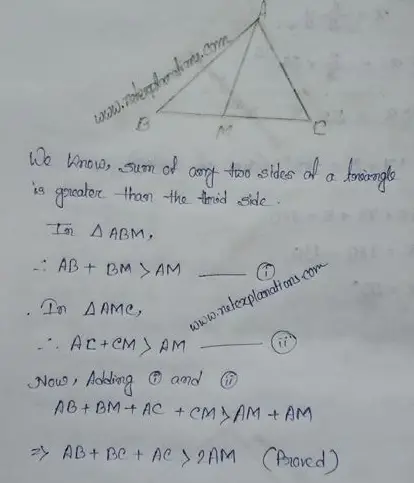
(5) In the given figure, P is a point on the side BC of ∆ABC. Prove that (AB + BC + AC) > 2 AP.
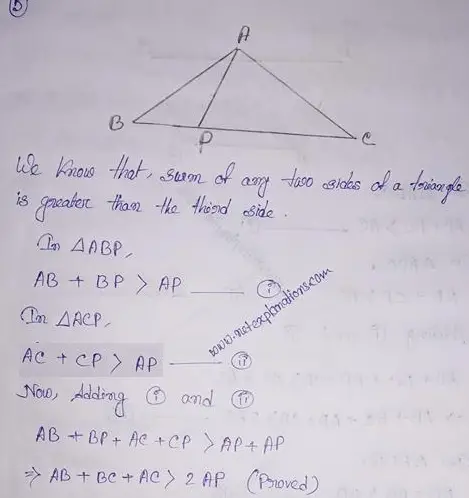
(6) ABCD is a quadrilateral.
Prove that (AB + BC + CD + DA) > (AC + BD)
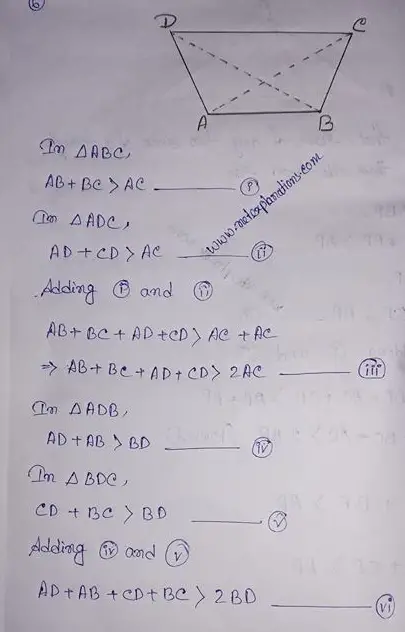
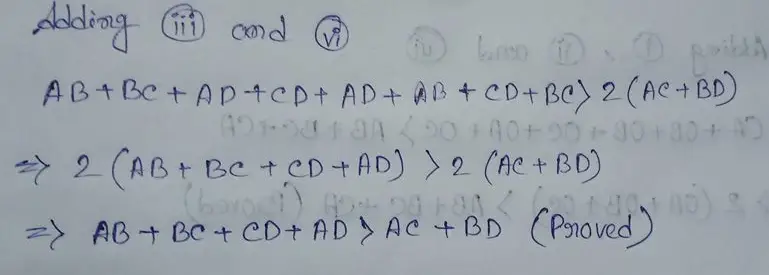
(7) IF O is a point in the exterior of ∆ABC, show that 2(OA + OB + OC) > (AB + BC + CA).
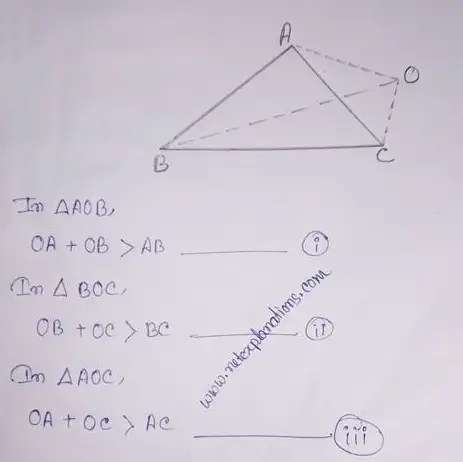
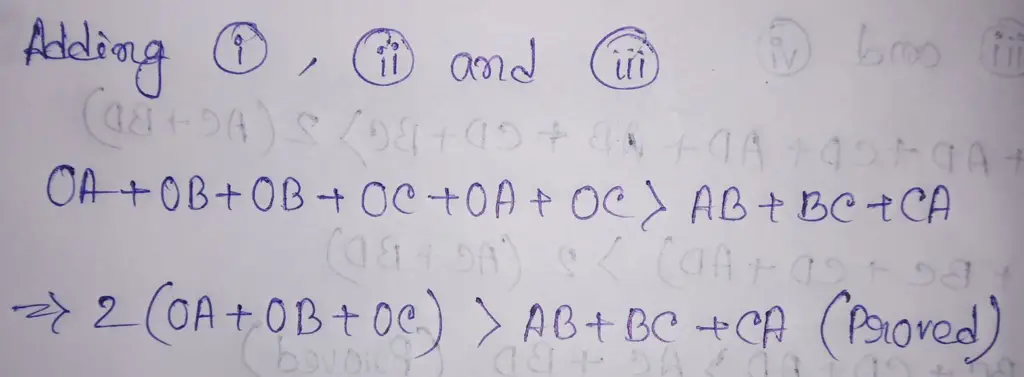
Leave a Reply